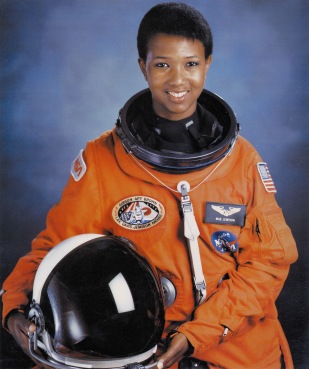
This 12 September 2017 is the 25th anniversary of Dr Mae Jemison’s flight on space shuttle Endeavour as the first Black American woman to travel in space. Dr Jemison began her career as a physician who served in the Peace Corps, before making history as an astronaut. To celebrate Dr Jamison’s achievements, let’s take a look at her contributions and the trajectory of other iconic women in spaceflight.
While there have been many iconic women pioneers in space travel, their ascent has been a triumph over gender inequity. Up until the 1980s, the media largely focused on women astronauts’ looks, making disparaging jokes about their femininity getting in the way of their missions. Thus they ignored the mental and physical stamina required to go into this field, not to mention the high level of education demanded of astronauts, who are qualified scientists. For example, the first woman to travel in space in 1963, Dr Valentina Tereshkova, did so after acquiring a Phd in engineering.
Only 50 years a go, astronaut John Glenn dismissed the scientific qualifications of women astronauts using biological determinism. He told a USA Subcommittee: “The fact that women are not in this field is a fact of our social order. It may be undesirable.”
Making the (Space) Jump
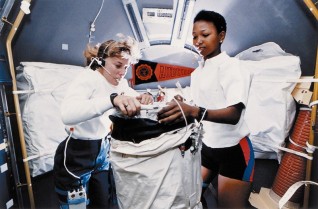
The must-see documentary by MAKERS features footage and interviews with the pioneer women who joined the American space program including the inspirational Dr Sally Ride, the first American woman in space, and the extraordinary Dr Mae Jemison. There are many interesting tidbits about the practical issues that helped make the case for gender equality. For example given that weight is an important concern to space flight, and the fact that women generally weigh and eat less than men, this helped rationalise the idea of allowing women into the space program.
Dr Randy Lovelace was the American physician who led aerospace medicine and he tested and passed the first 13 women for inclusion into the space program. He found that women performed better than men in the stress tests, and they also complained less during their physical tests. Having passed the training program, these women had to make their case to the USA congress in 1962 because the law did not allow women to become jet pilots for the military, and that was a prerequisite for astronauts. Their request was rejected and the program was stopped almost two decades.
Women of Colour Wanted
The documentary notes that women’s eventual inclusion was not due to progressive views per se, but because women activists increased political pressure and there were economic concerns of lawsuits. Technological innovations also ushered in equality. With better design and safety provided by shuttles, astronauts were no longer required to be jet pilots and could instead qualify as mission specialists (researchers and physicians for example). In 1977, for the first time in a decade, NASA put out an advertisement for a new recruitment drive, adding: “Astronauts wanted: Women, minorities are urged to apply.” White women and people of colour did not apply because they’d been excluded for so long, which is why NASA recruited Star Trek icon Nichelle Nichols to help make their message of inclusion clear.
Women’s Endless Frontier

The documentary provides a fascinating insight on women’s space history, including the unique challenges faced by these women in their education and addressing bodily practices in space! A couple of stand out quotes:
On equality: “Women have lived in space, and women have died in space. And there is probably no greater equaliser than that.”
On recruiting more women in future:
“I don’t particularly think the ‘first’ part matters so much except to the spectator crowd. It’s the work. Come be part of this adventure. Look what you can do. I don’t want someone saying, ‘Well the first has already gone, so there’s no reason.’ It’s not about the first. The first is a moment in time. It’s an artefact in the history books. It’s an artefact on the TV shows. The exploration, the discovery, the scientific opportunities the chance to make such a difference in the world is still all there. You are still a part of it. You can be a part of it. An endless frontier. Your endless frontier. Go after that endless frontier.”
Having reflected on the amazing journey of getting women into the space program, let’s now take a look at Dr Jemison’s career as well as two other space pioneers. Dr Anna Fisher is a trained chemist and the first mother in space. Dr Sally Ride, was a physicist known as the first American woman in space, and is now recognised as a role model for other sexual minorities in the lesbian, gay, bisexual, transgender, queer, intersex and asexual (LGBTQIA) communities.
Dr Mae Jemison
Physician and first Black woman astronaut
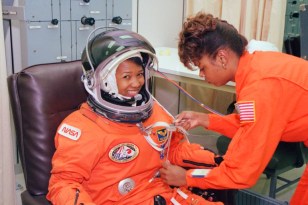
Dr Mae Jemison is a qualified medical doctor of many talents. Starting with a Bachelor of Science degree in chemical engineering in 1977, Dr Jemison completed a medical degree in Cornell University Medical College, and later studied in Cuba and Kenya. She also trained in a Cambodian refugee camp in Thailand. After completing her degree, she workd at the Los Angeles County University of Southern California Medical Center. She went on to become a general practitioner as well as serving in the Peace Corps as a medical officer and researcher in Sierra Leone and Liberia.
In 1986, she was admitted into NASA’s astronaut training program. Six years later, in 1992, she flew into space aboard the Endeavour, becoming the first Black American woman astronaut. She has received numerous awards and belonged to various scientific organisations, including serving on the Board of the World Sickle Cell Foundation from 1990 to 1992. She later went on to receive a teaching fellowship at Dartmouth.
She has famously advocated for science and the arts to work more closely together:
“The difference between science and the arts is not that they are different sides of the same coin even, or even different parts of the same continuum, but rather, they are manifestations of the same thing. The arts and sciences are avatars of human creativity.”
Below she talks about her work with 100 Year Starship.
Dr Anna Fisher
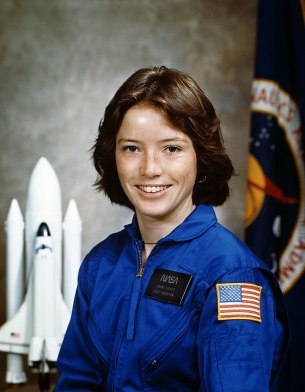
Chemist and the first mother in space
Dr Anna Fisher earned a Master’s degree in Chemistry and Doctor of Medicine, both from UCLA. She initially focused on x-ray crystallographic studies of metallocarbonanes, a field in inorganic chemistry. She then interned as a medical doctor in Harbor General Hospital in Torrance, California, with a specialty in emergency medicine, and later worked in other Los Angeles hosptials.
She was selected as an astronaut candidate in January 1978 and flew aboard Discovery in 1984. After taking 8 years off to raise a family, she returned to NASA and became the first mother in space when she went up on STS-51-A. She has held various integral management and technical roles. She was the chief of the Space Station branch whilst the International Space Station (ISS), was being built (1996-2002), helping with international relations and supervising astronauts and engineers. She went on to work in the Mission Control Center, as well as being the lead CAPCOM for Expedition 33, and the lead manager for the Oron Multi-Purpose Crew Vehicle (MPCV) and supports European payloads for the ISS Integration branch.
Dr Sally Ride
Physicist, astronaut and first American woman in space
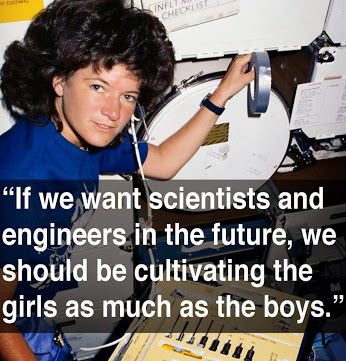
A STEM leader on many fronts, Dr Sally Ride, was born in Los Angeles in 1951 and went on to become the first American woman to fly in space. Ride earned her PhD in Physics from Stanford University in 1978, she same year she joined NASA, as part of the first group of women astronauts. On June 8, 1983, physicist Sally Ride blasted off into space on the space shuttle Challenger, breaking through the gender barrier as the first American woman in space. She went on two shuttle missions, served on many NASA review panels and later continued as physics professor at the University of California, San Diego. A Stanford graduate, she earned four degrees as well as a doctorate in physics. She was a varsity tennis player too. Later, she went on to promote young women achieve success in STEM careers.
Being the first has its challenges. Ride acknowledged she felt the weight of living up to other women’s expectations for her to be a leader. In 2008, she said: “I saw it in the eyes of the girls and the women and the grandmothers that I met, what it meant to them.” As a feminist, she took this seriously. At the same time, she endured sexism at work and from the media:
When it was announced Ride had been named to a space flight mission, her shuttle commander, Bob Crippen, who became a lifelong friend and colleague, introduced her as “undoubtedly the prettiest member of the crew.” At another press event, a reporter asked Ride how she would react to a problem on the shuttle: “Do you weep?”
When she passed away in 2012 of cancer, at age 61, Ride’s long-term partner announced Sally was lesbian, ultimately marking her a role model to the lesbian, gay, bisexual, transgender, queer, intersex and asexual (LGBTQIA) communities in STEM around the world.
Former astronaut Charles Bolden spoke of Ride’s grace and professionalism and said, “She will be missed, but her star will always shine brightly”. Her organisation, Sally Ride Science, a company she started to help teach students about STEM, particularly young women and girls, released this statement:
“Sally lived her life to the fullest, with boundless energy, curiosity, intelligence, passion, commitment and love. Her integrity was absolute; her spirit was immeasurable; her approach to life was fearless.”
Learn More
Want to know more about pioneer women of colour who supported the NASA space program? Check out our website for an interview we did with Candy Torres, a Latina software engineer who helped code for missions by NASA and the International Space Station.
Watch the MAKERS documentary below!
Featured in the image above is Poppy Northcutt who, at 25 years of age, was one of the first women to support NASA’s mission control.
